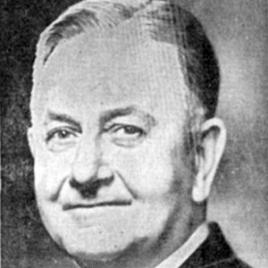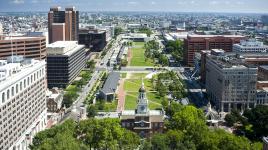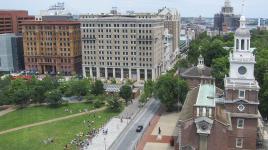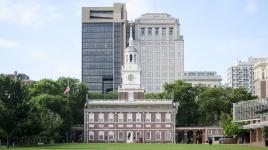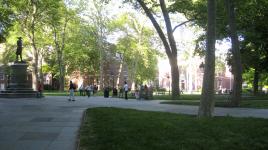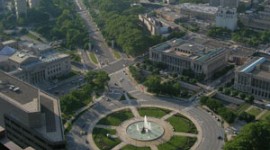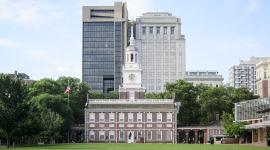Pioneer Information
Born in Minneapolis, Minnesota, Larson was employed by the architectural firm Zimmerman, Saxe & Zimmerman from 1911 to 1915, and by Lowe & Bollenbacker from 1916 to 1917, both in Chicago. He served as an army lieutenant during World War I and graduated from the University of Pennsylvania with a B.S. in architecture in 1923. (He would study city planning at the Massachusetts Institute of Technology some twenty years later). In 1924, Larson was awarded the Walter Cope Memorial Prize for his redesign of Franklin Square in Philadelphia, which was never executed. He was employed in the Philadelphia offices of Paul Cret after graduating from Penn, becoming a junior partner in 1925. Upon Cret’s death in 1945, Larson and his partners, John Harbeson, William Livingston, Sr., and William Hough, renamed the firm Harbeson, Hough, Livingston & Larson (eventually known as H2L2). Beginning in 1950, the firm worked with Wheelwright, Stevenson & Langran on the development of Independence Mall in Philadelphia. That same year, Larson was hired to plan the Moore Institute of Art, Science, & Industry’s new campus (now the Moore College of Art & Design) in Philadelphia. He became a Fellow of the American Institute of Architects in 1940 and was also a member of the Royal Institute of British Architects, the National Academy of Design, and the National Sculpture Society. He served on many boards and committees in Philadelphia and elsewhere and was a visiting critic in the Engineering Department of Pennsylvania State University. In 1962, Larson won the Rome Prize in architecture from the American Academy in Rome. He retired in 1970 and died three years later in Bryn Mawr, Pennsylvania, at the age of 80.




